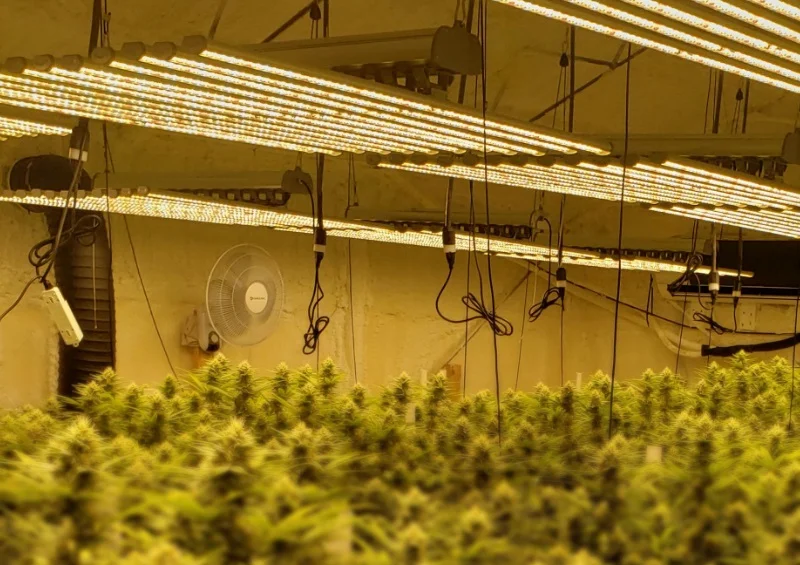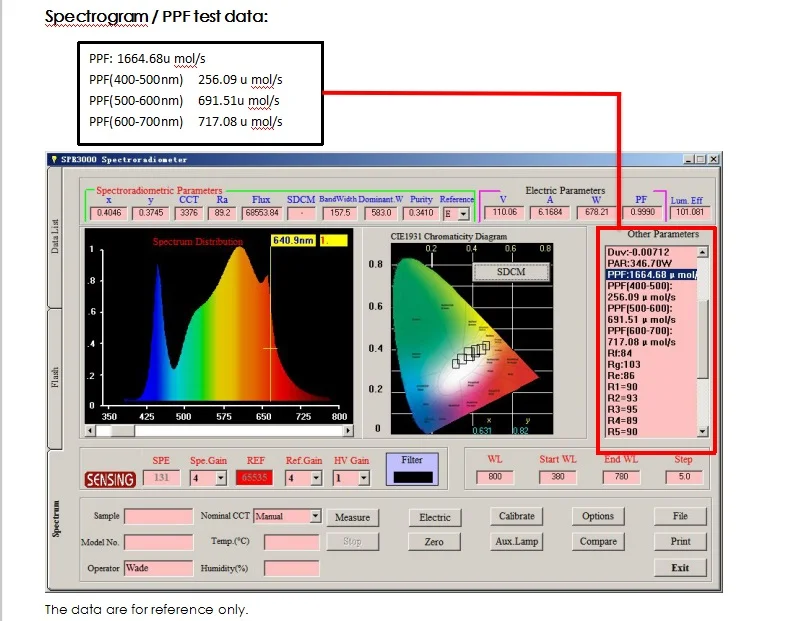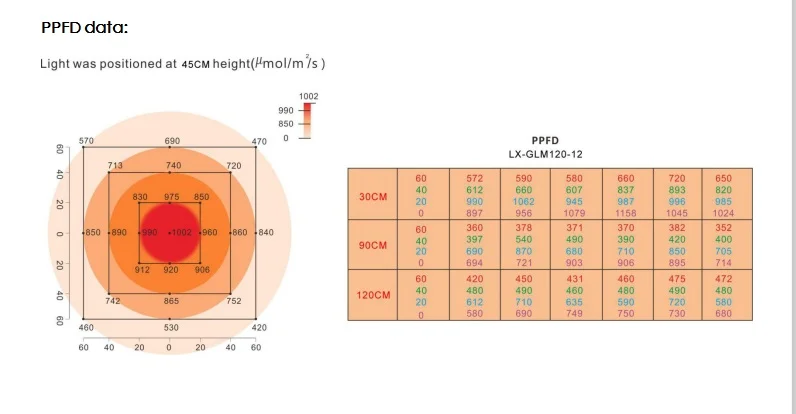I. Introduction to LED Grow Lights
In the realm of modern horticulture, the evolution of plant lighting technology has taken a significant leap forward with the emergence of LED grow lights. These innovative light sources have revolutionized the way we nurture plants, enabling us to create optimal environments for growth and development. This article delves into the transformative journey of LED grow lights, exploring their scientific foundations and shedding light on their environmental implications.
Understanding the Evolution of Plant Lighting Technology
The journey of plant lighting technology dates back to the early use of incandescent and fluorescent lights. These conventional sources, while functional, were far from efficient in terms of energy consumption and light spectrum optimization. The development of LED (Light Emitting Diode) technology marked a turning point, as it offered a highly versatile and energy-efficient solution for indoor plant cultivation. The progression from incandescent bulbs to the targeted wavelengths of LED grow lights signifies a paradigm shift in how we illuminate and nurture plants.
The Environmental Impact of Traditional Plant Lighting Methods
Conventional plant lighting methods, particularly those relying on high-energy consumption sources, have left a notable carbon footprint on the environment. Incandescent and fluorescent lights not only consume excessive electricity but also emit substantial heat, contributing to energy waste. In contrast, LED grow lights are designed to emit specific wavelengths of light that plants need for photosynthesis, resulting in significantly lower energy consumption and reduced heat production. This transition to LED technology aligns with the growing emphasis on sustainability and environmentally conscious practices.

II. The Science Behind LED Grow Lights
At the heart of LED grow lights' effectiveness lies the intricate relationship between photosynthesis and light spectrum. Understanding this fundamental science is essential to harnessing the full potential of LED technology for plant growth.
Photosynthesis and Light Spectrum: A Deep Dive
Photosynthesis, the process by which plants convert light energy into chemical energy, is reliant on the absorption of specific wavelengths of light. Different stages of plant growth require distinct portions of the light spectrum. LED grow lights have the advantage of emitting targeted wavelengths, allowing growers to tailor light conditions to meet the unique requirements of various crops. By delving deep into the science of photosynthesis, we gain insights into the role of different wavelengths in promoting growth, flowering, and fruiting.
Unveiling the Secrets of Photosynthetic Photon Flux (PPF)
Photosynthetic Photon Flux (PPF) is a crucial metric that measures the total number of photons emitted by a light source per second. It serves as a quantitative indicator of a light’s potential to drive photosynthesis. LED grow lights are designed to maximize PPF efficiency by emitting photons that plants can readily utilize for photosynthesis. Understanding PPF empowers growers to select LED lights that optimize plant growth, ensuring higher yields and healthier plants.
Red-Blue Spectrum Dominance: Why It Matters
Among the various wavelengths, the red and blue spectrum of light plays a pivotal role in plant growth. Red light is essential for flowering and fruiting, while blue light is crucial for vegetative growth and overall plant health. LED grow lights are engineered to provide precise ratios of red and blue light, ensuring that plants receive the optimal spectrum for their growth stage. This dominance of red and blue wavelengths in LED lighting systems is a cornerstone of their effectiveness in promoting plant development.

III. Exploring Different Types of LED Grow Lights
The versatility of LED technology extends to different types of LED grow lights, each designed to cater to specific plant requirements and growth stages.
Full Spectrum Grow Lights: Illuminating the Perfect Balance
Full spectrum LED grow lights emulate the complete range of light wavelengths present in natural sunlight. This comprehensive illumination is advantageous as it covers the entire spectrum needed for photosynthesis. Full spectrum LEDs cater to all growth stages, from seedling to flowering, offering a balanced approach to plant cultivation.
UV-Enhanced LED Grow Lights: Shedding Light on Their Benefits
Ultraviolet (UV) light, which is usually filtered out by the Earth's atmosphere, plays a significant role in plant development. UV-enhanced LED grow lights provide controlled doses of UV light, stimulating the production of secondary metabolites in plants. These compounds contribute to increased defense mechanisms, flavor enhancement, and overall plant resilience.
Red-Blue Spectrum LEDs: Optimizing Growth in Different Plant Stages
Red-blue spectrum LEDs offer a targeted approach to plant growth by emitting specific ratios of red and blue light. This spectrum is tailored to cater to different growth stages. Blue light dominates during the vegetative phase, promoting strong stems and lush foliage. As plants transition to flowering, a higher ratio of red light stimulates blossom formation. Red-blue spectrum LEDs exemplify the precision that LED technology brings to indoor gardening.
Stay tuned for the subsequent sections of this article, where we'll delve deeper into the advantages of LED grow lights, their role in tailoring light to specific plant needs, and their contribution to sustainable plant lighting practices.

IV. Advantages of LED Grow Lights for Plant Growth
Energy Efficiency: A Green Approach to Plant Cultivation
LED grow lights have revolutionized plant cultivation by offering a more energy-efficient alternative to traditional lighting methods. Unlike conventional lighting, LED technology converts a higher percentage of electricity into usable light, minimizing energy wastage in the form of heat. This not only reduces electricity consumption but also contributes to a greener, more sustainable approach to plant growth. As growers strive to minimize their carbon footprint, LED grow lights emerge as a viable solution that aligns with environmentally conscious practices.
Boosting Yield and Crop Quality with High-Output LEDs
The ability of LED grow lights to enhance yield and crop quality is a game-changer for horticultural enthusiasts. High-output LEDs deliver intense, targeted light that can be precisely tailored to the specific needs of different plants. By providing the optimal light spectrum and intensity, these LEDs stimulate photosynthesis and promote healthy growth. This translates into increased yields and improved crop quality, making high-output LED grow lights an invaluable tool for commercial growers and home gardeners alike.
Unleashing Potential: How Plant-Specific LEDs Influence Growth
Plant-specific LED technology takes customization to a new level. These LEDs are engineered to emit specific wavelengths of light that cater to the unique requirements of different plant species. By harnessing the power of these tailored wavelengths, growers can optimize growth parameters such as flowering, fruiting, and overall health. Plant-specific LEDs tap into the inherent potential of plants, unlocking their growth patterns and maximizing productivity. This targeted approach showcases how LED technology can be fine-tuned to revolutionize plant cultivation.
V. Tailoring Light for Plant-Specific Needs
The Flowering Stage: Orchestrating Blossom with LED Illumination
LED grow lights play a pivotal role in orchestrating the flowering stage of plants. The spectrum of light provided by LEDs can be customized to trigger and enhance the flowering process. By adjusting the balance of red and blue light, growers can influence the timing and quality of blooms. Whether it’s indoor ornamentals or crops like tomatoes, LED illumination during the flowering stage ensures a vibrant and abundant blossoming, replicating the natural cues provided by sunlight.
Shedding Light on Vegetative Growth: A Focus on Cannabis Cultivation
In the realm of cannabis cultivation, LED grow lights have garnered significant attention. These lights offer precise control over light spectrum and intensity, crucial for different growth stages. During the vegetative phase, cannabis plants require ample blue light to encourage robust leaf and stem development. LED technology allows growers to provide this specific spectrum, leading to healthier and more vigorous vegetative growth. With LED grow lights, cannabis enthusiasts can ensure optimal conditions for their plants' early growth stages.
Hydroponic Delight: LEDs' Role in Soilless Vegetable Gardening
Hydroponic systems, where plants grow without soil, rely heavily on artificial lighting. LED grow lights are particularly well-suited for hydroponics due to their efficiency and customizability. The light spectrum emitted by LEDs can be tailored to meet the unique needs of different crops grown hydroponically. Whether it’s leafy greens, herbs, or even strawberries, LED illumination fosters robust growth and efficient nutrient utilization. This makes hydroponic gardening a year-round delight, empowered by the precision of LED technology.
VI. Unveiling the Dynamics of Controlled Environment Lighting
The Role of LED Grow Lights in Controlled Environment Agriculture
Controlled Environment Agriculture (CEA) is redefining modern farming by providing optimal growth conditions through controlled temperature, humidity, and light. LED grow lights are central to this revolution, offering the ability to fine-tune light spectrum and intensity. In CEA systems, LEDs ensure that plants receive the ideal illumination at every growth stage, resulting in faster growth rates, higher yields, and reduced resource consumption. This integration of technology and agriculture marks a significant step towards sustainable and efficient food production.
Vertical Farming Revolution: A Vertical Perspective on LED Lighting
Vertical farming addresses the limitations of traditional horizontal cultivation by stacking plants in vertical layers. This approach optimizes space utilization and enables year-round cultivation in urban areas. LED grow lights are a cornerstone of vertical farming, providing consistent and uniform illumination to plants across tiers. The adaptability of LED technology allows vertical farms to cater to various crops, from leafy greens to strawberries, without the constraints of natural sunlight. The result is an innovative and productive solution to urban agriculture.
Illuminating Growth: Enhancing Crop Production with Light Modulation
The concept of light modulation has transformed the way we view plant growth. By manipulating light intensity and spectrum, growers can influence physiological processes to optimize crop production. LED grow lights excel in this aspect by offering precise control over both parameters. Modulating light intensity can stimulate specific growth responses, such as elongation or branching. Additionally, adjusting the spectrum can tailor growth patterns to suit different crops. This level of control showcases the potential of LED technology in achieving higher yields and better quality produce.
VII. Sustainable Plant Lighting Practices
Nurturing Sustainability: LED Lights and Eco-Friendly Plant Cultivation
Sustainability is a driving force in modern agriculture, and LED grow lights embody this ethos. Their energy-efficient design results in reduced electricity consumption, contributing to lower carbon emissions. LED technology aligns with the principles of sustainable cultivation, allowing growers to produce more while consuming fewer resources. This eco-friendly approach paves the way for a greener future, where plant cultivation and environmental responsibility coexist harmoniously.
The Role of LED Grow Lights in Reducing Carbon Footprints
The shift towards sustainable practices includes minimizing the carbon footprint associated with plant cultivation. LED grow lights play a vital role in this endeavor by consuming significantly less energy compared to traditional lighting methods. This reduction in energy usage translates directly to lower greenhouse gas emissions. As the world grapples with climate change, LED technology emerges as a practical solution for reducing the environmental impact of agriculture.
Energy Efficiency Metrics: Understanding PPF Efficiency and Beyond
Efficiency metrics are essential in assessing the performance of LED grow lights. One crucial metric is Photosynthetic Photon Flux (PPF), which measures the number of photons emitted by the light source. PPF efficiency directly influences plant growth, as more photons translate to higher photosynthetic activity. Beyond PPF, other metrics such as PPF per watt provide insights into the energy efficiency of LED grow lights. Understanding these metrics empowers growers to make informed decisions and maximize the benefits of LED technology.
VIII. Exploring the Light Stress Response in Plants
Illuminating Stress: How Light Impacts Plant Health and Resilience
While light is essential for plant growth, excessive or inappropriate light exposure can lead to stress. This stress response can negatively impact plant health and overall resilience. Understanding how different light conditions induce stress helps growers create optimal cultivation environments. With LED grow lights, it’s possible to modulate light intensity and spectrum to prevent undue stress, ensuring healthier and more robust plants.
Managing Light Stress with LED Grow Lights: Best Practices
LED grow lights offer a powerful tool for managing light-induced stress. By carefully adjusting the light spectrum and intensity, growers can mitigate stress responses in plants. Implementing gradual transitions in lighting conditions, providing shade during intense light periods, and utilizing light dimming features are some effective strategies. LED technology empowers growers to create stress-free environments, contributing to the long-term well-being of plants.
IX. FAQs About LED Grow Lights and Plant Cultivation
How do LED grow lights influence plant growth? LED grow lights provide specific light wavelengths that cater to various growth stages, promoting photosynthesis and overall plant health.
Can LED lights replace natural sunlight entirely for indoor gardening? While LED lights can mimic sunlight effectively, a blend of natural sunlight and LED illumination is often recommended for optimal plant growth.
What’s the ideal light spectrum for vegetative growth? For vegetative growth, a balanced full spectrum with a focus on blue wavelengths is ideal, as it stimulates leaf and stem development.
How do I choose the right LED grow light for my hydroponic system? Consider factors such as light spectrum, coverage area, and light intensity to select an LED grow light that aligns with your hydroponic setup.
Can LED grow lights be used for different plant species? Yes, LED grow lights can be customized to provide the specific light spectrum and intensity required by various plant species, making them versatile choices for cultivation.



